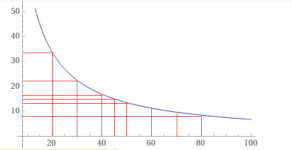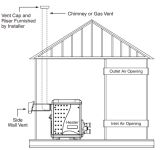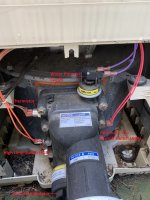You can get a water temperature from the heater for the inlet, which is the spa water temp.
If you can get a water temp at the heater exit, you can calculate the temperature rise.
Exit temp - inlet temp = temp rise.
If you know the flow rate, you can calculate the expected temp rise.
For example, 40 gpm is 2,400 gallons per hour or about 20,000 pounds per hour.
At 40 GPM, the expected temp rise is about 336,000/20,000 = 16.8 degrees F.


This shows the expected temp rise (Y-axis) vs. Flow in GPM (X-axis).
The minimum required flow is 40 gpm.
So, the maximum temp rise should be 16.8 degrees Fahrenheit.
A 400,000 btu/hr heater with an efficiency of 84% transfers 336,000 btu per hour to the water.
At a minimum required flow of 40 gpm, there will be 2,400 gallons of water (20,000 lbs.) that receives the heat.
Each btu raises the temperature of one pound of water by one degree Fahrenheit.
336,000 btu into 20,000 pounds of water is 16.8 degrees of temperature rise (336,000/20,000).
So, the maximum temperature rise you should ever have is 16.8 degrees Fahrenheit.
Higher flow results in a lower temperature rise.
50 gpm = 13.44 degrees temperature rise.
60 gpm = 11.2 degrees temperature rise.
70 gpm = 9.6 degrees.
80 gpm = 8.4 degrees.
























